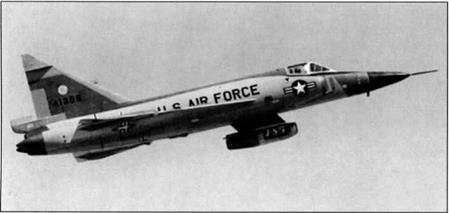THE CHANGING NATURE OF FLIGHT AND GROUND TEST. INSTRUMENTATION AND DATA: 1940-1969
Before a new engine or airframe achieves its first flight much prior ground testing has been done in wind tunnels or engine test cells. Ground and flight tests are run to establish performance characteristics and to aid in design development and refinement. This requires collection and analysis of relevant test data from test runs in specially instrumented engines, scale models, and aircraft.
The fundamental task of such tests is collecting performance and reference data. What data are collected depends upon the purpose of the tests:
Development testing to refine the final production design;
Type or endurance testing as precursor to military or civilian acceptance of the basic design;
Flight tests demonstrate aircraft or engine ability to operate under realistic circumstances, uncover design difficulties, and establish maintenance schedules for production aircraft or engines;
Acceptance tests to show that individual production engines meet minimum contractual performance characteristics.[2]
Some development, acceptance, and engine endurance testing can be done in wind tunnel and engine test stand ground facilities; the others invariably are airborne.
Instrumentation, which is the source of data from tests, tends to be most extensive in development testing and flight test – which are my focus. Airborne tests technically are the most demanding. For data to be useful, they must be recorded and processed into interpretable forms.
Instrumentation, recording, and processing of aircraft data have evolved substantially since the latter 1800s. These developments do not sort themselves into nice periodizations, but can be construed as three contrasting testing styles, overlapping for as much as 40 years, but each dominating different periods.
In the first style the primary airborne instrument is the test pilot’s subjective judgments augmented by notes on a knee pad and whatever readings of basic flying instruments could be jotted down. This style is important from the beginning of flight until about 1945, though a remnant today is the test pilot controlling what parts of the test flight are recorded at what data density.
67
P Galison and A. Roland (eds.), Atmospheric Flight in the Twentieth Century, 67-105 © 2000 Kluwer Academic Publishers.
The second style emphasizes enhanced instrumentation recorded by something/ someone other than the test pilot, where recorded data, not the pilot’s reactions, are the primary data. Instrumentation can include an observer taking manual readings, gun cameras recording duplicate instrument panels, recording barographs, photopanels, transducer fed oscillographs, and telemetering to ground stations. Another defining characteristic is that data recording does not allow direct computerized analysis of the data. This style begins in the 1920s and dominates in the 1950s and 1960s.
The third style emphasizes very extensive automated instrumentation using transducers and probes, automatic pre-processing of data and digital data recording for computer analysis. This first comes in with the XB-70 and dominates high-end flight test subsequently – though style two continues in lower-end testing today where oscillographs continue to be used.
My story concerns evolution of instrumentation and data from style one to three. On the eve of World War II pilot reports, limited recording of data, and hand-analysis of recorded flight test data were typical. During the next three decades, automated data collection and digital computer reduction and analysis of data became the norm,2 with as many as 1200 channels of data being recorded and analyzed. The transformation essentially was complete with the instrumentation and data handling systems of the XB-70.1 will discuss the main transformations and changes in flight – test and ground-test instrumentation, data reduction, and analysis during that pivotal thirty-year period. Consideration will be given to wind tunnel testing, engine test-cell investigations, and flight-testing of both engines and airframes. I focus on turbojet – powered aircraft.
I also make some systematic philosophical remarks on data and modeling and offer concluding observations. 1
|
Figure 1. General Electric modified F-102 used for flight test of the J-85; circa 1960. [Suppe collection.] |
far enough to ensure reliable performance, the now proven new engine could be put into the unproven airframe.6
Before an engine ever is taken aloft, it undergoes a great deal of testing on the ground in test cells. Similarly, before a new airframe is taken aloft, it has undergone extensive aerodynamic testing in wind tunnels. A general rule of thumb is to use flight test primarily for what cannot be studied in ground testingfacilities.











